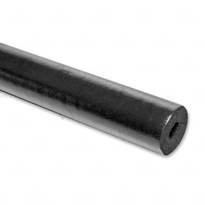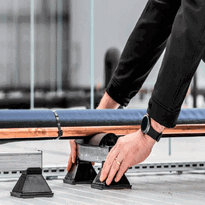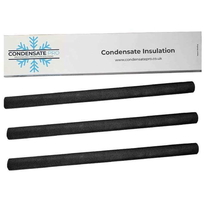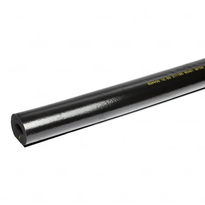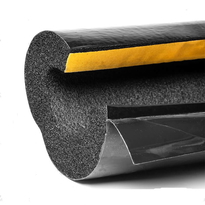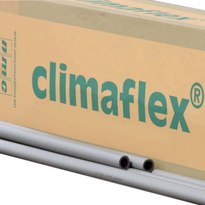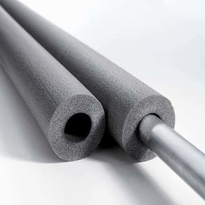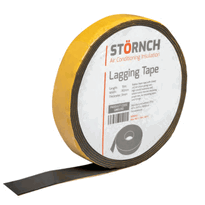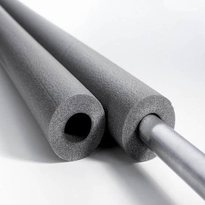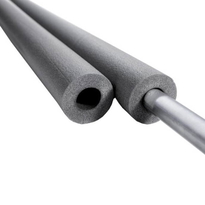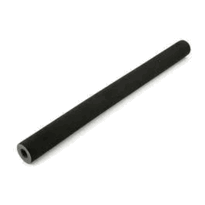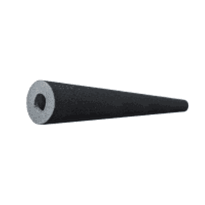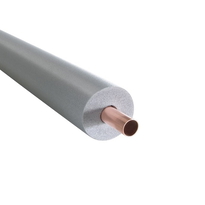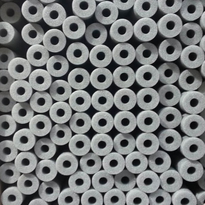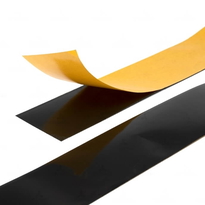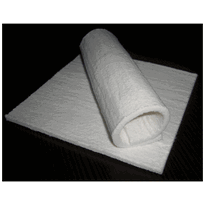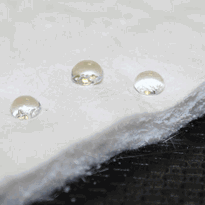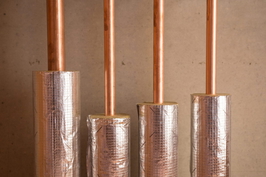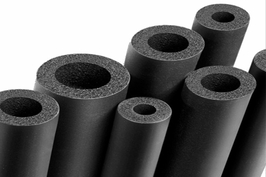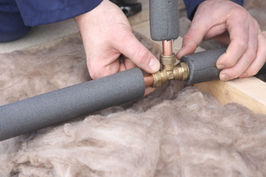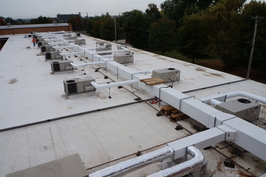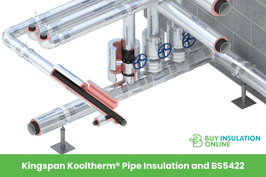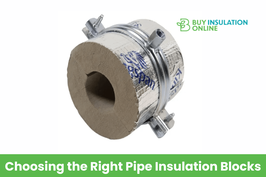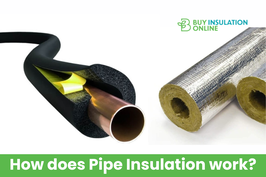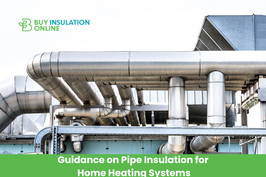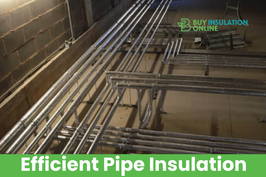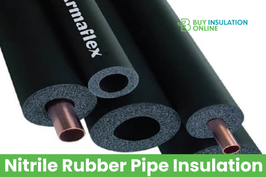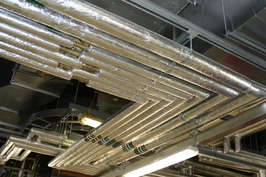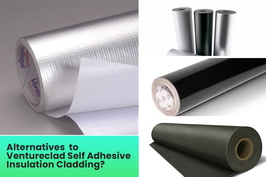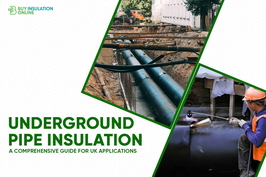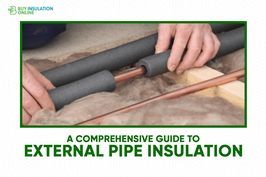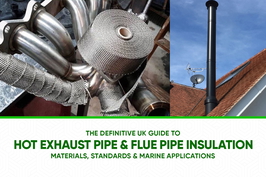Waterproof External Pipe Insulation
Waterproof external pipe insulation is essential for safeguarding pipes against moisture infiltration, adverse weather conditions, and temperature fluctuations. Common materials utilised for this purpose include polyethylene, polyurethane, and PVC, all of which are flexible, durable, and resistant to moisture.
Effective insulation is characterised by sealed joints, protective jacketing, and coatings that resist UV exposure, ensuring it can withstand various outdoor elements. The installation process is crucial; it involves thoroughly cleaning the pipes and sealing any gaps to guarantee waterproofing.
Selecting the appropriate type of insulation and adhering to best practices can significantly enhance the lifespan and efficiency of outdoor piping systems. By focusing on these factors, you can optimise the performance and durability of your piping infrastructure.
Types of Waterproof External Pipe Insulation Materials
There are several types of waterproof external pipe insulation materials utilised to protect and enhance the efficiency of outdoor piping systems. Foam and synthetic polymers are popular choices in this regard.
Polyethylene insulation is flexible, lightweight, and resistant to moisture, making it a preferred option for both residential and commercial cooling systems.
Polyisocyanurate (PIR) provides exceptional thermal efficiency and can withstand high temperatures, making it ideal for outdoor pipes that are exposed to heat.
Polystyrene insulation delivers consistent thermal protection in low-temperature applications, while polyurethane combines durability with strong moisture resistance, making it suitable for chilled pipes.
Polyisobutylene (PIB) cladding, a type of synthetic rubber, serves as an effective vapour barrier and can endure extreme weather conditions.
Additionally, these materials are specifically designed to keep pipes dry and functioning efficiently, regardless of outdoor weather conditions, ensuring long-lasting insulation performance.
Advantages of Using Waterproof Insulation for Outdoor Pipes
Utilising waterproof insulation for outdoor pipes presents considerable advantages, particularly in safeguarding against moisture damage and enhancing energy efficiency.
This type of insulation effectively prevents water infiltration, which can lead to corrosion and diminish the performance of the insulation, ultimately resulting in costly repairs. Waterproof pipe cladding forms a protective barrier that ensures the insulation remains effective over time, even in challenging environmental conditions.
Moreover, waterproof insulation aids in maintaining consistent temperatures, minimising heat loss and reducing energy expenditures.
By ensuring that outdoor pipes remain protected from the elements, homeowners can enjoy increased longevity and reliability of their plumbing systems.
In summary, the use of waterproof insulation is a prudent investment for anyone looking to protect their outdoor piping while also promoting energy conservation.
Moisture Damage Prevention
Moisture damage is a prevalent concern for outdoor pipe systems in the UK, as exposure to rain, snow, and humidity can lead to corrosion, mould growth, and material deterioration. Proper insulation is crucial in creating a barrier that protects against these elements. Waterproof insulation, particularly closed-cell foam types like polyethylene and polyurethane, significantly mitigates these risks by fully encapsulating pipes and preventing moisture ingress. Their structure effectively stops water from contacting the pipe surface, inhibiting corrosion and ensuring insulation performance even in damp conditions. Proper sealing of joints, combined with the addition of protective jackets or coatings, creates reliable waterproof barriers. These layers help prevent moisture from permeating through gaps or vulnerable points.
Enhanced Thermal Efficiency
Improved thermal efficiency is a significant advantage of waterproof insulation for outdoor pipes, as it helps to maintain the desired water temperature while minimising energy loss. By creating a barrier against cold air and adverse weather conditions, waterproof insulation can substantially reduce heat loss, ensuring that water remains warm for an extended period. This enhanced thermal management contributes to smoother system operation and less energy is required to reheat water, leading to cost savings and resource conservation. Consistent temperature control prevents sudden fluctuations, which can protect pipes from damage and lessen the strain on heating systems. Consequently, pipes can deliver a reliable hot water supply, even in challenging outdoor environments. This efficiency not only conserves energy but also prolongs the lifespan of pipes and associated equipment, making waterproof insulation a prudent investment. Proper insulation also helps prevent condensation and corrosion, further enhancing the longevity and safety of outdoor piping systems.
Common Types of Insulation Used in External Pipe Applications
Various types of insulation are commonly utilised in external pipe applications to protect against heat loss, enhance energy efficiency, and withstand harsh environmental conditions.
Fibreglass pipe insulation, composed of fine glass fibres, performs well at high temperatures and provides fire resistance. However, without proper sealing, it can absorb moisture, which diminishes its effectiveness.
Elastomeric foam insulation, made from flexible rubber foams such as NBR or EPDM, is moisture-resistant, easily accommodating complex pipe shapes and eliminating the need for vapour barriers.
Mineral wool insulation, derived from rock or slag wools, offers excellent handling of high temperatures, fire resistance, and sound absorption, making it particularly suitable for industrial environments.
These insulation options cater to different requirements and environments, ensuring that pipes remain protected and efficient.
Key Features to Look for in Outdoor Pipe Insulation Solutions
When selecting outdoor pipe insulation, it's vital to prioritise durability in challenging conditions. The insulation should effectively endure exposure to elements such as wind, rain, and sunlight. Pipe diameter measured in imperial or metric sizes Additionally, it must be flexible and compatible with various pipe sizes and fittings, ensuring a snug fit and optimal protection. Focusing on these key features can guarantee long-lasting performance and reduce the need for frequent maintenance. Proper outdoor insulation not only safeguards pipes but also contributes to energy efficiency, helping to reduce heating costs over time. Investing in quality insulation will ultimately enhance the longevity of your plumbing system, making it a wise choice for any homeowner or contractor.
Durability in Harsh Conditions
Durability in harsh outdoor conditions is crucial when selecting pipe insulation, as it must endure extreme weather and environmental factors over time. Materials such as rubber foam and polyethylene foam offer resistance to UV rays and moisture, preventing issues like brittleness, cracking, and water damage. Importance of water line pipe insulation Utilising protective coatings with UV inhibitors and moisture barriers can significantly extend the lifespan of insulation, even in challenging conditions such as rain, hail, or snow. Insulation options like rigid foam and fibreglass effectively maintain their thermal properties during temperature fluctuations, thereby resisting freeze-thaw cycles without compromising performance. Furthermore, the inclusion of tough outer layers or protective jacketing provides an additional shield against impacts from debris, wind, or animals. In coastal or industrial environments, opting for corrosion-resistant materials is essential to ensure longevity. Ultimately, selecting durable insulation not only reduces maintenance needs but also minimises replacement costs, guaranteeing that pipes remain protected year after year, even in demanding conditions.
Installation Flexibility and Compatibility
Choosing the appropriate insulation for outdoor pipes necessitates consideration of its ease of installation and compatibility with various pipe types. Many insulation products work well with metal, plastic (PVC, CPVC, PEX), and copper pipes, effectively preventing corrosion or degradation. The right material can significantly extend the lifespan of your pipes by resisting environmental factors. Flexible options can adapt to different pipe shapes, including irregular bends and fittings, ensuring a smoother installation process. Some products come with universal fittings or can be customised to suit various systems, providing enhanced versatility. Easy-to-install solutions such as pipe-wraps or spiral sleeves are ideal for shorter or curved sections, while foam sleeves can be quickly slid onto straight pipes. Lightweight and flexible materials facilitate installation in tight spaces, with securing methods like tape or ties ensuring the insulation remains in place. Additionally, compatibility with weatherproofing measures offers extra protection against the outdoor elements, making the right insulation choice crucial for maintaining the integrity of your pipes.
Factors to Consider When Selecting Waterproof Pipe Insulation
Selecting waterproof pipe insulation requires careful consideration of several key factors to ensure effective protection and performance.
Material properties are crucial; closed-cell materials such as elastomeric rubber or PVC cladding effectively prevent water absorption and resist moisture. Using materials with low moisture permeability ensures the insulation remains dry and maintains its insulating properties over time. Environmental conditions also play a significant role in your choices. Outdoor pipes that are exposed to elements like rain, snow, and UV rays necessitate coatings or insulation designed with high weather resistance to guarantee longevity.
The size of the pipe and the available space for insulation will influence the thickness required. In confined areas, opting for thinner or composite insulation solutions is often the best approach. Durability and maintenance can't be overlooked. Choosing high-quality materials and conducting regular inspections will help sustain the waterproof qualities of your insulation and extend its lifespan.
Best Practices for Installing External Pipe Insulation
Proper installation of external pipe insulation requires careful preparation and precise craftsmanship to ensure maximum effectiveness.
Firstly, pipes should be thoroughly cleaned to remove any dirt, grease, or debris that could hinder insulation adhesion. Inspect the pipes for any damage or corrosion and repair any issues before proceeding with the installation.
It's crucial to ensure that the pipes are dry, as trapped moisture can lead to rust or mould formation. Remove any old insulation materials to create a clean surface, and mark the lengths of the pipes for accurate cutting.
Use pre-formed foam sleeves or suitable pipe-wrap insulation, cutting them precisely to fit. During installation, slide the sleeves over the pipes, ensuring that seams are sealed tightly.
When using wrap insulation, overlap the layers and secure them with waterproof tape. Finally, make sure that all components are firmly secured, apply protective jackets, and conduct a thorough inspection for any gaps.
This will help achieve reliable, waterproof insulation, contributing to the longevity and efficiency of your piping system.
Maintenance Tips for Ensuring Long-Term Waterproofing Efficacy
Regular maintenance is crucial for maintaining the waterproofing effectiveness of external pipe insulation over time.
To keep the insulation in optimal condition, several steps should be followed:
Conduct visual inspections frequently, looking for any signs of damage such as tears, cracks, or punctures that could allow water ingress.
Carefully examine seams and joints, as these areas are particularly vulnerable to moisture penetration.
It is also important to clean the surface to remove dirt, debris, and organic matter that can trap moisture and encourage mould growth.
Promptly repair or replace any damaged sections, and reapply sealants or tapes when wear indicates that it's necessary.
Additionally, maintain detailed records of all inspections and repairs.
This practice helps to monitor the condition of the insulation over time and ensures long-lasting waterproofing, which in turn maintains the safety and efficiency of the piping system for years to come.
Environmental and Industry Regulations Impacting Insulation Choices
Environmental and industry regulations significantly influence the selection of external pipe insulation. These regulations are designed to ensure that materials comply with safety, environmental, and performance standards.
For instance, the International Energy Conservation Code (IECC) mandates that outdoor pipe coverings are resistant to weather-related damage, including sunlight, moisture, and wind. In the UK, regulations emphasise the importance of weather-resistant insulation, with specific guidelines that discourage the use of adhesive tapes in outdoor applications.
Insulation materials located near storage tanks must also adhere to stringent outdoor-rated standards, with compliance inspections verifying that energy efficiency targets are met. Furthermore, it is crucial that insulation materials do not emit harmful volatile organic compounds (VOCs) and favour sustainable practices, including the use of recyclable options and materials that enhance fire safety.
The following table provides a visual summary of these regulatory considerations:
Regulation Focus |
Key Requirement |
| Energy Codes | Weather-resistant coverings, appropriate insulation values |
| Material Use | VOC-free, recyclable, and fire-resistant materials |
| Industry Standards | Durability, safety tests, and weather resistance |
| Compliance | Inspections, documentation, and verification |
| Environmental | Eco-friendly and chemical-resistant insulation |
Innovations and Future Trends in Waterproof External Pipe Insulation
Advancements in materials and design are significantly influencing the future of waterproof external pipe insulation.
New materials, such as flexible elastomeric foam with closed-cell structures, effectively prevent moisture accumulation and condensation, making them particularly suitable for humid outdoor environments.
Rigid foam insulation provides high thermal resistance and is enhanced by weatherproof coatings and UV-resistant wraps, ensuring durability against rain, sunlight, and freezing temperatures.
Additionally, the use of PVC rigid films as protective jacketing is becoming more prevalent. These materials offer resistance to dust, chemicals, and moisture, thereby extending the lifespan of the insulation system.
Emerging composite materials are also gaining traction, marrying thermal efficiency with water resistance to tackle durability challenges.
Modern solutions frequently incorporate multi-layer systems that combine core insulation with protective jackets, enhancing resistance to adverse weather conditions and physical damage.
These innovations aim to improve energy efficiency, simplify installation processes, and deliver long-lasting, reliable insulation for outdoor pipes, catering to the specific needs of the UK market.
Conclusion
Choosing the right waterproof external pipe insulation is essential for ensuring durability and protection against weather and moisture. By understanding the available materials, installation techniques, and maintenance requirements, homeowners can effectively extend the life of outdoor pipes.
Staying informed about industry standards and the latest innovations can further enhance insulation performance. Proper selection and care provide reliable waterproofing, preventing damage and minimising long-term costs.
Informed decisions lead to more effective and long-lasting insulation solutions, safeguarding outdoor piping systems efficiently and reliably.
